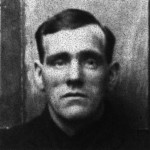 The sinking of the RMS Titanic was one of the famous tragedies of the 20th century, and even after the passing of a century, the event, the lives lost, and the grandeur of the ship itself have not been forgotten. However, what is not as well known is what happened to many of the survivors of the sinking, whether they were first-class passengers, officers, or everyday people looking to start a new life in America. The stories of the Titanic survivors reflect how the sinking affected their lives, from tragedy to triumph, and how unexpected adversity can change the course of a single life.
The sinking of the RMS Titanic was one of the famous tragedies of the 20th century, and even after the passing of a century, the event, the lives lost, and the grandeur of the ship itself have not been forgotten. However, what is not as well known is what happened to many of the survivors of the sinking, whether they were first-class passengers, officers, or everyday people looking to start a new life in America. The stories of the Titanic survivors reflect how the sinking affected their lives, from tragedy to triumph, and how unexpected adversity can change the course of a single life.
1. The Tennis Player: R. Norris Williams
 The son of an affluent American and direct descendant of American patriot Benjamin Franklin, R. Norris Williams was just 21 years old when he boarded Titanic with his father Charles. Norris had been raised and schooled in Geneva and was an accomplished tennis player. On the night of the sinking, Norris freed a passenger from a cabin by breaking down a door and then made his way to the deck of the ship with his father. He was eventually washed overboard and his father was killed when the ship’s funnels collapsed. Once he made his way to a waterlogged lifeboat, he sat with his lower legs submerged as the people in the collapsible waited for rescue.
The son of an affluent American and direct descendant of American patriot Benjamin Franklin, R. Norris Williams was just 21 years old when he boarded Titanic with his father Charles. Norris had been raised and schooled in Geneva and was an accomplished tennis player. On the night of the sinking, Norris freed a passenger from a cabin by breaking down a door and then made his way to the deck of the ship with his father. He was eventually washed overboard and his father was killed when the ship’s funnels collapsed. Once he made his way to a waterlogged lifeboat, he sat with his lower legs submerged as the people in the collapsible waited for rescue.
When the Carpathia arrived, a doctor examined Norris’ frostbitten legs and recommended they be amputated. Norris refused, as he was determined to continue his tennis career. Despite the damage to his legs, he began to walk every few hours until circulation was restored. Amazingly, Norris not only made a full recovery, he went on to win tennis championships at Harvard and won two titles at the 1914 and 1916 U.S. Championships and fought in World War I as well. Norris’ determination to survive and succeed after the sinking is a testament to what one person can accomplish in the face of adversity and tragedy.
2. The Socialite: Margaret “Molly” Brown
 While most people know about Molly Brown and her bravery during the Titanic sinking, it is not as well-known that she was active in women’s rights and other causes both before and after the tragedy. Born on 18 July 1867, in Hannibal, Missouri, Molly and her husband, J.J. Brown, made their fortune in gold ore in Colorado. Molly sailed aboard Titanic from Cherbourg, France, after getting word that her grandson had taken ill back in America.
While most people know about Molly Brown and her bravery during the Titanic sinking, it is not as well-known that she was active in women’s rights and other causes both before and after the tragedy. Born on 18 July 1867, in Hannibal, Missouri, Molly and her husband, J.J. Brown, made their fortune in gold ore in Colorado. Molly sailed aboard Titanic from Cherbourg, France, after getting word that her grandson had taken ill back in America.
Molly Brown’s courage lasted far beyond her actions in the lifeboat, where she taught the other woman how to row and encouraged them all to sing to keep their spirits up. Once the Carpathia arrived, she worked to create the Titanic Survivors Committee, of which she became chair. She also acted as a translator on board, being fluent in a variety of languages. The committee raised money for survivors who had lost everything due to the sinking, no matter their class. When she was refused entrance to the Titanic hearings and was not allowed to testify because of her gender, she had her findings and account of the sinking published in a variety of international newspapers. Brown persevered despite the tragedy and used her fame afterward to further human rights for others.
3. The Lookout: Frederick Fleet
 Liverpool native Frederick Fleet is well known to Titanic historians, as he was the lookout who cried the famous line, “Iceberg, right ahead!” As Titanic began to founder, Fleet was put to work manning the lifeboats. He was put in charge of lifeboat #6 and ultimately escaped the terrible fate of most other Titanic officers because of it, but this action would affect Fleet’s destiny for the rest of his days.
Liverpool native Frederick Fleet is well known to Titanic historians, as he was the lookout who cried the famous line, “Iceberg, right ahead!” As Titanic began to founder, Fleet was put to work manning the lifeboats. He was put in charge of lifeboat #6 and ultimately escaped the terrible fate of most other Titanic officers because of it, but this action would affect Fleet’s destiny for the rest of his days.
Like other survivors of the Titanic crew, Fleet was mercilessly grilled about the events of the sinking by both American and British committees. He and the other lookout, Reginald Lee, both spotted the black mass of the iceberg at the same time, but many blamed them for spotting it too late. After the inquiries, Fleet found work on another White Star ship but did not stay long because of the legacy he carried with him, and it showed on his face, even at an early age. Fleet remained on the water for almost a quarter century and then came ashore to work as a shipbuilder. Sadly, he committed suicide in 1964 after the death of his wife, but it may be that the events that took place after Titanic contributed to his mental state as well.
The sinking of the RMS Titanic affected all who survived that fateful night in April of 1912. How the survivors moved on and dealt with the aftermath reflects how courage, determination, and even emotional trauma are all part of the human experience, despite social and economical divisions.

